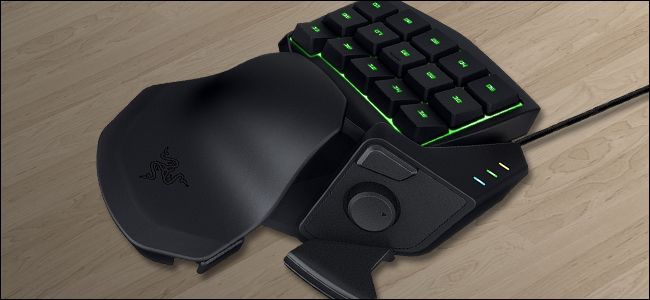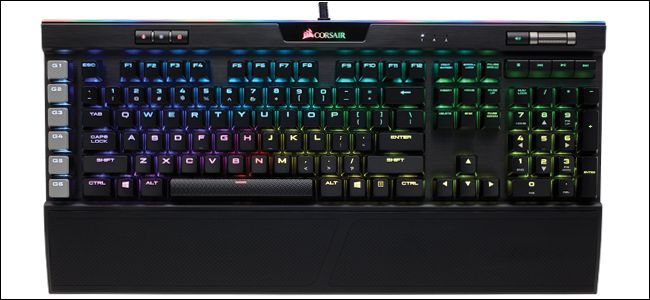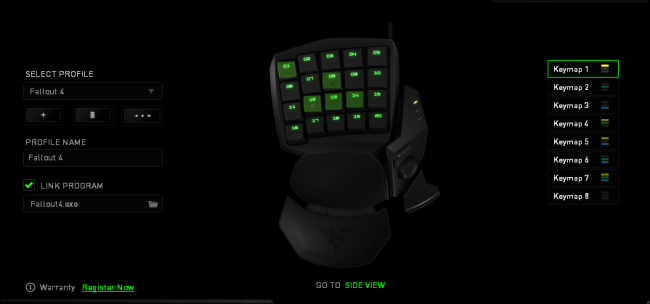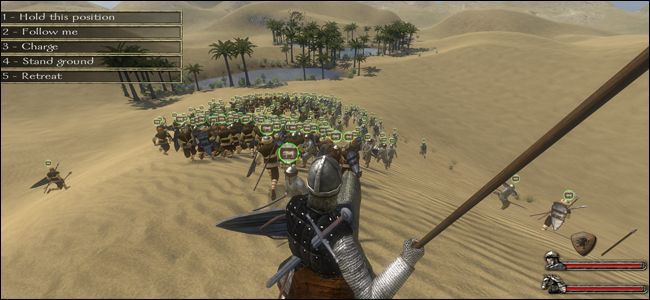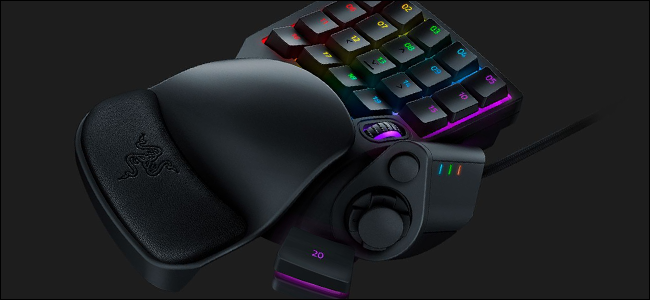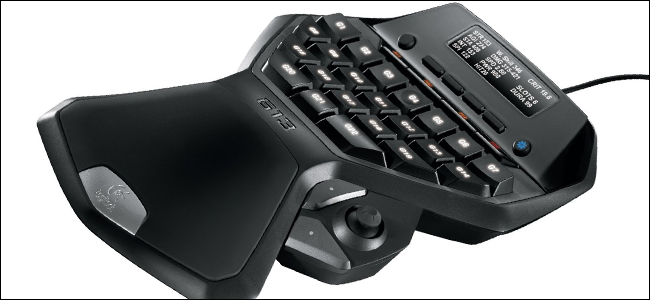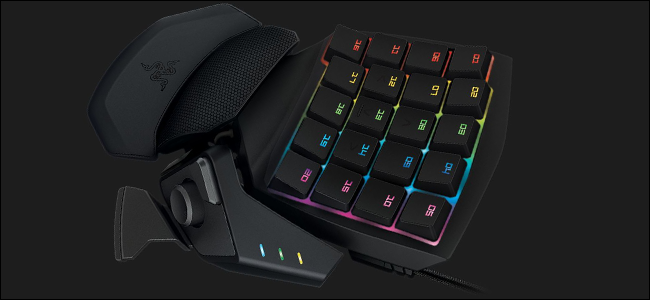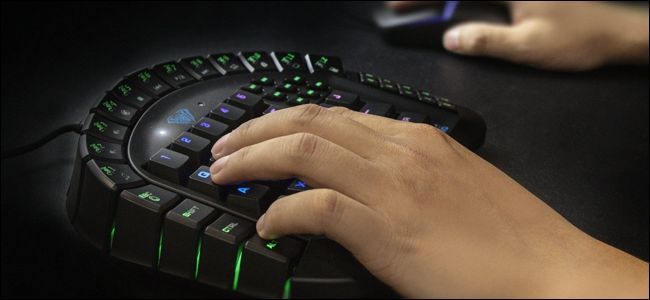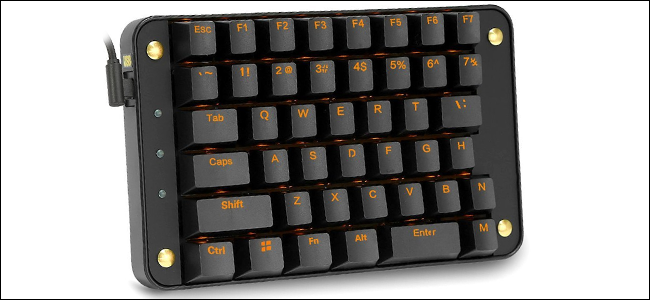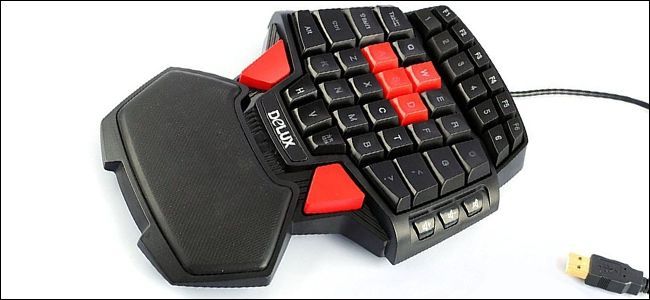Keyboards aren't designed to play games...but most PC games are designed to be played on keyboards. It's an interesting bit of evolutionary dissonance in the world of PC gaming, from back when people actually worked on computers and games were a secondary consideration.
But there's an alternative to this. Not controllers; that's an import from the console world, and controllers are still a poor choice for games like shooters, strategy titles, online RPGs, and MOBAs. No, instead, I recommend a left-handed "gamepad." (Yeah, they're really poorly named.) These part-keyboard, part-controller things have been around for over a decade, quietly thrilling a small group of dedicated PC gamers, but never gaining the panache of the full dedicated keyboard and other gadgets. But accessory manufacturers have been refining them, in both software and hardware terms, and they're worth a try for any dedicated PC gamer.
These niche little gadgets have a bit of a branding problem---no one knows quite what to call them, for one---but I think for a lot of players they're a better investment than a full-sized gaming keyboard. As someone who started gaming on the SEGA Genesis and never liked the WASD setup, I've been using various Belkin and Razer versions to play PC games for a decade, and never once felt that I was missing something.
Why (And When) Are Gamepads Superior to Keyboards?
How are these gadgets better than gaming keyboards and/or console controllers? Oh, let me count the ways.
They're Smaller and More Ergonomic
Regular keyboards aren't especially ergonomic to begin with---that's why so many "ergonomic" models are on the market, including big palmrests, elevated and angled decks, and other, more fanciful tricks. The problem is that these keyboards are rarely made with the very specific and intense use of PC gaming in mind: heavy pressure on the left side, a focus on a relatively small array of keys from Escape through F4 and down to the space bar.
Not so with left-handed gamepads. Almost all of the models on the market include a big, comfy rest for your palm, a carefully-selected cluster of the most commonly-used keys for gaming, and some even include a forward-angled thumb cluster similar to a vertical mouse. Having a separate device for your left hand also lets you move it out and away from the center of your desk (where the normal keyboard stays for most non-gaming activities), and stay more or less in the opposite spot to your mouse, which is much more natural for extended play times. (Obviously I'm not including those who use a mouse with their left hand---sorry, fellow southpaws.)
The thumb work on these gamepads is worth talking about all on its own, particularly the more popular Logitech and Razer models. These have either a dedicated Nintendo-style D-pad or a tiny, flexible 8-way joystick, allowing you to control character movement with only a thumb, console-style. That gives you three fingers free, index, middle, and ring, that were previously semi-dedicated to WASD controls. It's just a much more efficient way to move around in a character-focused game. And don't worry, purists: custom binds and profiles for everything means you can still use conventional WASD movement and assign something else to the thumb control cluster.
Between a much more focused design, better ergonomics, and more flexible positioning, the gamepad is a great way to make those long gaming sessions more comfortable.
They Work Better For Complex PC Games
My trusty Xbox One controller gets its fair share of use on my gaming PC; it's absolutely the best way to play most third-person action games (including console ports) and genres like racing, fighting games, and beat-em-ups. But for PC games that are designed primarily for the mouse and keyboard, and games that benefit from a mouse input but don't need too much extra camera control like first-person shooters, dedicated gamepad-keyboards are fantastic.
Take complex RPGs like Skyrim, Fallout, and The Witcher for example. All of these are playable on the controller---in fact, they're available on every major console---but they're just a bit more in-depth than a typical action game. The extra single-button binds for things like individual category inventories or specific weapons and spells makes the experience much more fluid on the PC. In this instance, you get the best of all worlds: better ergonomics and custom key binds on the gamepad, and accurate aiming with the mouse.
Some games truly shine on the mouse/gamepad combo. Mount & Blade, an indie title that mixes massive real-time battles in first person and third person with a strategy, empire-building over map is one of them. After getting everything set up to my liking, I was able to control everything in both modes---including real-time commands of my medieval troops during active combat---without ever moving my hand away from the primary controls. The same feat on a conventional keyboard would leave my joints sore and my (admittedly pudgy) fingers reaching.
They're Cheaper Than (Some) Gaming Keyboards
If you're looking for a new mechanical keyboard, especially one that's specifically marketed for gamers, odds are pretty good that you're looking at a $100 investment. For comparison, the Razer Tartarus V2 is $80 and the Logitech G13 is under $60 on Amazon. Less popular options are even cheaper. Not bad if you're on a budget---keep in mind that the de facto standard Xbox One controller is also $60.
Variants with full mechanical keys are more expensive: the Razer Orbweaver is a whopping $130, but the Aula Excalibur (much bigger with no dedicated thumb controls) is only $70. The various configurations of this half-keyboard with Cherry MX keys are north or south of $80.
Granted, the better part of $100 is a lot to spend on an accessory. I'd recommend finding one of the Logitech or Razer models at a local electronics store (or an online retailer your trust), trying it out for a few days, and saving your receipt in case you just don't like the experience.
Another handy plus for a left-handed gamepad: you can use a standard keyboard for writing and browsing if you're not a fan of the actual typing action of gaming or mechanical keys. So for example, you could use a keyboard with Cherry MX Brown (clicky) switches and a gamepad with Cherry MX Red (linear) switches for their faster activation.
Which One Should You Get?
Convinced? Alright, let's break down the popular models and compare and contrast their features. Keep in mind that more or less all of these gadgets will let you set custom binds and profiles, and some come with backlighting.
Razer Tartarus
The Razer Tartarus ($80) is the middle-of-the-road option, and the one I'd recommend to newcomers to this form factor. The previous model (which is still widely available, and pictured in the header image) is almost identical to the more expensive Razer Orbweaver, minus mechanical keys and an extra row of buttons. But to be honest, those buttons are pretty hard to reach during intense games. I haven't been able to try the newer V2 Tartarus, which uses more "clicky" buttons, but based on my experience with the original I'd say it's still an excellent pick. The newer model has four more buttons and a scroll wheel, but I never used that when it was still present on the original Belkin Nostromo anyway. I also prefer the original's more clicky thumbstick.
Logitech G13
Unlike Razer's more staggered design, Logitech's G13 ($60) uses a symmetrical key layout that I'm not particularly fond of. Its key surface does allow for easier differentiation without looking, and the larger side and bottom keys is good if you often use modifiers or macros. The G13 is the only gamepad model I've ever seen with a dedicated LCD screen, which can be used to display game or PC stats. The thumb cluster in the G13 is also the closest to a console-style thumbstick. Note that the palm rest is static and shallower than some other designs.
Razer Orbweaver
The most expensive and "deluxe" of the more easily-available designs, the Razer Orbweaver ($130) comes with Razer's mechanical switches in green (clicky) or orange (linear). It also has per-key RGB lighting and the most customizable wrist rest on this list---the thumb cluster even telescopes for maximum comfort. All those extra features will cost you, though: I use one myself, but unless you're dedicated to the form factor, I can't recommend spending $130 on it.
Aula Excalibur
The newer Aula Excalibur ($70) has an impressive 60 total keys, some mechanical, some not, cramming in all twelve function row keys and a number pad to its huge plastic case. In lieu of a thumbstick it moves some of the more common control and modifier keys from the right side of a conventional keyboard, like enter and backspace. This is for the dedicated WASD fans out there, though I have to say its function keys are less useful than they could be since you'll have to move your hand to activate them. At $70, it's a more economical choice if you insist on mechanical switches.
Koolertron (Various Designs)
Koolertron's gadgets are half-keyboards---there's really no other name for them. They come in a variety of styles and can even be combined with a right-half model for a split ergonomic keyboard. I'm including them in this list because they have authentic Cherry MX keys in a lot of different colors, and because they're a good choice if you want the ergonomic and spacial benefits of a gamepad without giving up your muscle memory from years of WASD gaming. Ortholinear and non-standard layouts are available as well, all of which can be programmed, for $65-80 dollars.
Delux T9 Mini Gaming Keypad
I'm including this whitebox gamepad in the list purely for a budget option. It's designed to mimic the Logitech G13, minus the thumb cluster (and its crucial thumbstick), for just $25. Consider it if you only want to try out this type of product without a large investment. An alternative with a more standard WASD layout is the ACEPHA T9, though it also unfortunately lacks a thumb cluster.

